Everything You Need to Know About Cornmeal—Including How To Use It

Cornmeal is a key ingredient in cornbread, but it can be used for plenty of other dishes, too.
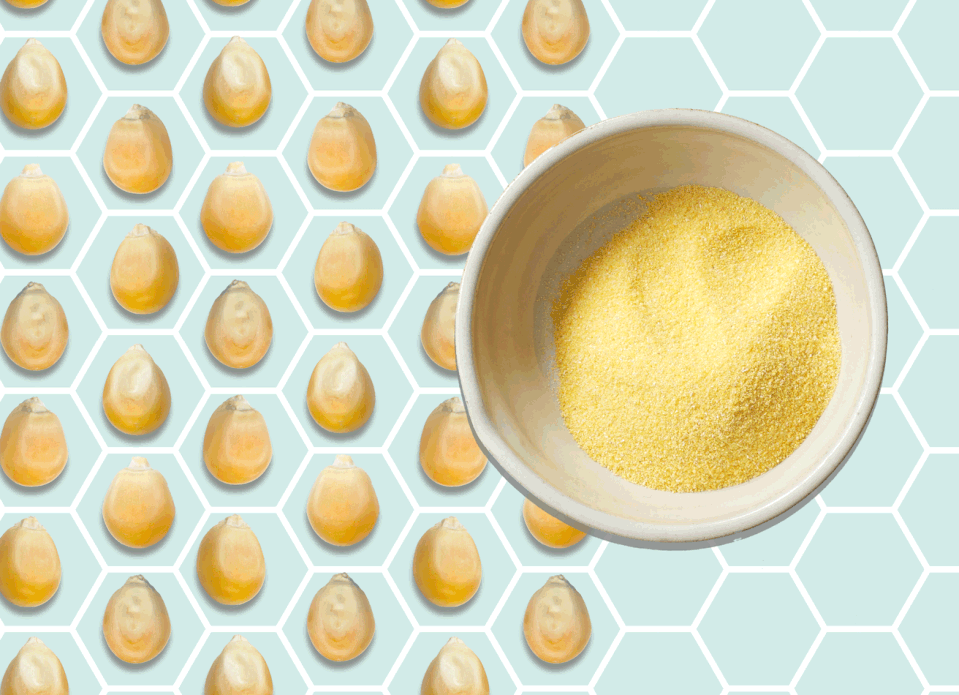
Despite its notoriety for being the key ingredient in cornbread, cornmeal is not a one-note ingredient. Cornmeal's vibrant color and flavor brighten up many dishes and it creates a light, crispy crust when fried.
Below, we detail what exactly is cornmeal, the difference between cornmeal vs. cornstarch vs. corn flour, and share some of our favorite cornmeal recipes that utilize the flaky yellow ingredient.
What Is Cornmeal?
Cornmeal is made of ground yellow corn ranging in texture from fine to coarse grounds. Most yellow cornmeal, especially the kind found in U.S. supermarkets, is made from dent corn, which has a high starch content and prominent corny texture.
While cornmeal is most commonly used in cornbread, it forms a delicious, crispy crust on fish, chicken, and mozzarella sticks. Cornmeal is processed either through a stone ground, which produces a coarser texture and more artisanal product, or steel rollers which produce a finer ground, removes the germ and bran, and makes it shelf-stable.
Is Cornmeal Gluten-Free?
Since cornmeal is only made with dried maize, it is gluten-free. However, there's always a chance that the cornmeal was processed in the same facility as gluten products, so be sure read your labels. Traditional cornmeal-based recipes like corn muffins, cornbread, and southern hoe cakes do contain gluten.
Types of Cornmeal
There are many types of cornmeal, ranging from coarse and medium to fine grind.
Yellow cornmeal, which is probably the most common, is finely ground corn that usually uses the entire kernel. It adds flavor, texture, and body to a dish.
Blue cornmeal (which gets its name from its light blue or violet color) is ground from whole blue corn ground into a fine texture and is sweeter in flavor.
White cornmeal is typical in the South and is commonly used in dishes like cornbread.
Tips
For a traditional taste and texture, try using fine or medium ground yellow cornmeal when making cornbread. It will provide a rich golden hue and won't be too tough, while a coarser grind might.
Cornmeal vs. Cornstarch
Cornstarch is a white powder made from the endosperm of the corn kernel (aka the starchy, white interior). Cornstarch is most commonly used as a thickening agent in sauces, puddings, and ice cream. Since cornstarch is only made with corn, it is a naturally gluten-free product that can be used as a substitute where flour would be the thickening agent (like when making a basic roux as a base for béchamel sauce in macaroni and cheese).
When adding cornstarch to hot liquid, it should first be tempered to prevent clumping. Whereas some recipes will only call for one or two tablespoons of cornstarch, others will call for multiple cups of cornmeal.
Cornmeal vs. Corn Flour
Corn flour ($3; bobsredmill.com) is very similar to cornstarch; however, corn flour is more finely ground than cornstarch. They can be used interchangeably in cooking to thicken gravy and other sauces. Corn flour is also a popular substitute in gluten-free recipes, as well as the base of homemade corn tortillas and tamales.
In the grocery store, you'll find both corn flour and masa harina. While they are similar products, masa harina is made with corn that has been soaked in a chemical limewater solution, which allows the corn flour to be formed into a dough. Cornmeal, on the other hand, is very coarsely ground compared to cornstarch and corn flour, and is the standout ingredient in muffins and cookies.
Cornmeal Substitute Ideas
Have a recipe you're dying to make and no cornmeal in sight? No sweat—while no substitution will replicate the ingredient perfectly, there are a few shortcuts you can take if you're out.
For starters, the most obvious substitute for cornmeal is polenta. Some polenta recipes even note that cornmeal can be used as a substitute. However, authentic polenta dishes like our polenta bake with shrimp use a coarser ground cornmeal labeled specifically as "polenta" for a true Italian texture.
Corn grits and corn flour also make fine alternatives to standard cornmeal—just remember that the grits will be coarser than actual cornmeal and the flour will be finer, so adjust the quantities you use in your recipe as needed.
Cornmeal Recipes to Try
If you're wondering what to do with leftover cornmeal, we've got answers.
Corn Spoon Bread
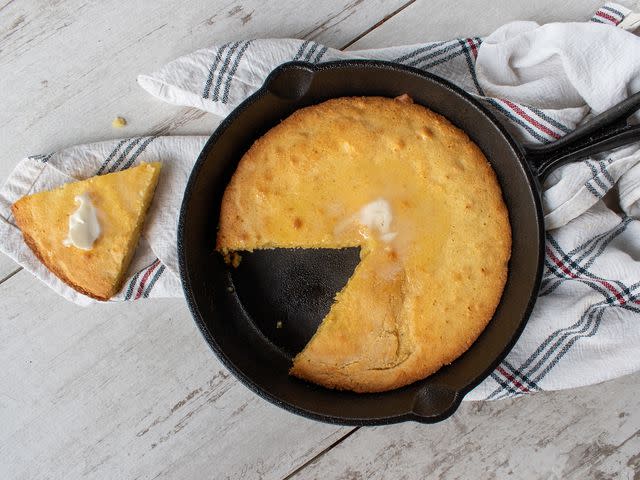
For a bright flavor and crumbly texture that highlight the very best of yellow cornmeal, try a traditional Southern preparation of cornbread. This recipe, a spoonbread, offers a lighter, less dense and crumbly texture than what you might be used to.
Strawberry Almond Cornmeal Cake
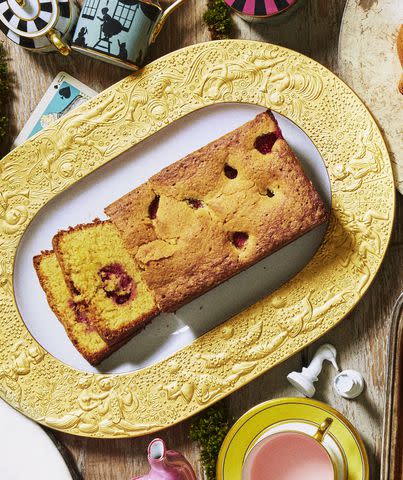
In the mood for something sweet? We love strawberry recipes and cornmeal adds a light, crumbly texture and great flavor to this one. The use of almond flour mixed with fine cornmeal lends itself to a cake that isn't overly sweet—and makes this an ideal afternoon treat with tea or coffee.
Cornmeal-Crusted Mozzarella Sticks
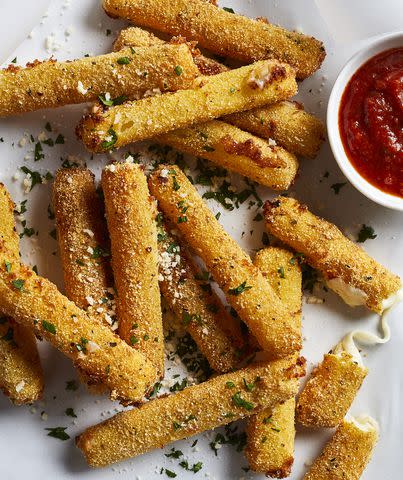
Cornmeal creates an incredibly crispy, airy crust on these melty mozzarella sticks, which utilize packaged string cheese for an easy, tastes-like-childhood appetizer. The cornmeal coating makes this dish naturally gluten-free, and using jarred pasta sauce for dunking means you won't have to clean too many pots and pans.
Lemonade Fried Chicken
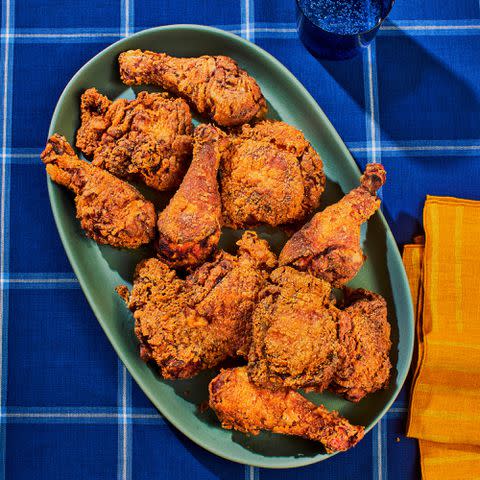
We love the crispy coating cornmeal provides on this epic fried chicken dish. True to its name, the chicken is brined in a mix of water, lemon, hot sauce, and plenty of spices. The result is a juicy, moist bird with just the right amount of kick.
For more Real Simple news, make sure to sign up for our newsletter!
Read the original article on Real Simple.

